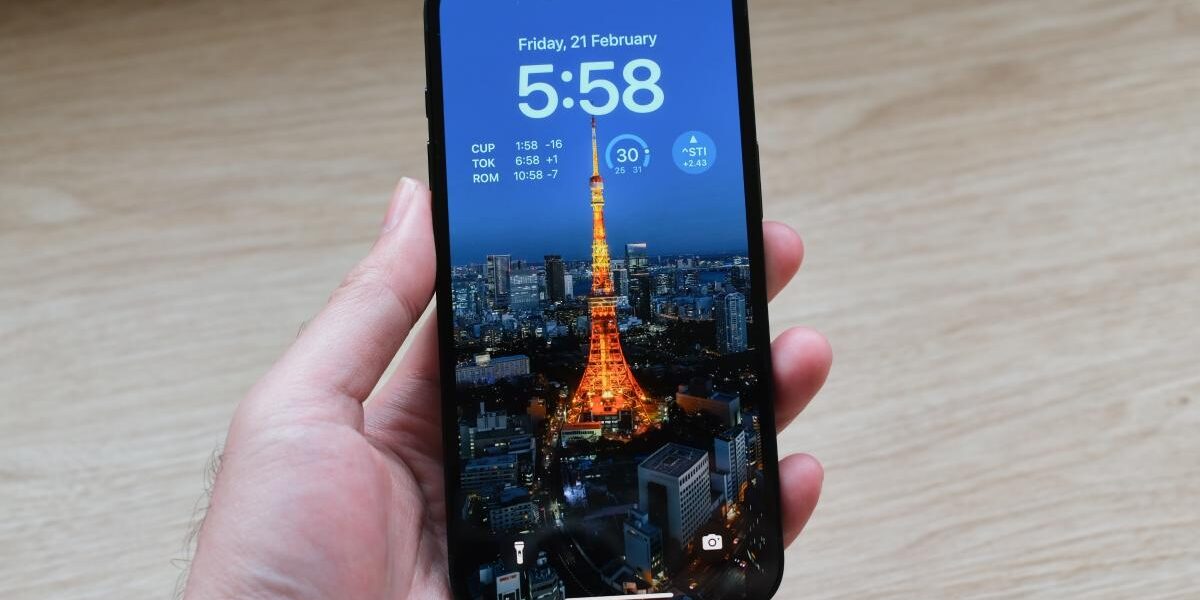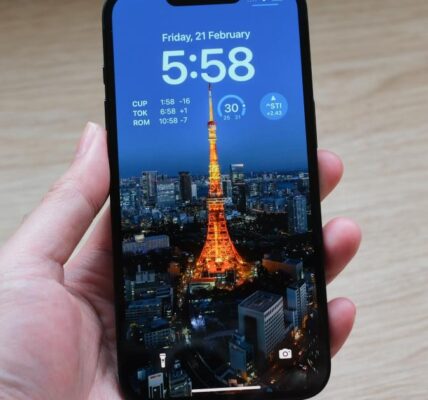Apple iPhone 16E review
Note: This review was first published on 27 February 2025.

Apple’s most affordable iPhone has finally gotten its much-needed update. Not only does it have a more contemporary design and upgraded internals, but it also gets a new name. It’s called the iPhone 16E. You can make your own guesses as to what the “E” stands for, but it’s obvious that Apple wants you to think of it as an extension of the iPhone 16 lineup. Crucially, Apple’s recipe for a cheaper iPhone hasn’t changed: keep the essentials and trim the fat. So in the case of the iPhone 16E, have they taken too much off to lower its price, or have they got the balance right? Let us dig deeper to find out.
The TL;DR version:
Apple’s most affordable iPhone is still rather pricey, but it’s a solid phone that delivers great performance and takes great photos. In other words, it’s all the iPhone most people would ever need.
Note: You can find the Apple iPhone 16E on Lazada, Shopee, Amazon, and the Apple Online Store.
Let’s cut to the chase. There are two ways to look at the iPhone 16E. Either it’s an iPhone 14 with modern internals and features, or an iPhone 16 with an older design and some missing features. Both interpretations are valid. And I’ll cut to the chase, here are the key differences and features that the iPhone 16E is missing when compared with the iPhone 16.
- Slightly less bright display
- Slightly less powerful version of the A18 chip
- Only one camera
- No Camera Control
- Missing MagSafe
- No Wi-Fi 7 support
As you can probably tell, Apple has been very cautious about shedding features from the iPhone 16E. The iPhone 16E has just enough to keep it feeling modern and fresh. But the missing features make you take a long hard look at your wallet and wonder if it’s worthwhile to pony up the extra cash and make the leap to an iPhone 16 instead. Apple is very good at this.

We will have to dig deeper and investigate the iPhone 16E to see if it’s all the iPhone you need, or if you should stretch your budget and get an iPhone 16. Read on to find out. But if you are impatient and can’t wait, click the sections below to skip to them.
Design & features

To be clear, the iPhone 16E’s design isn’t entirely new, it’s based heavily on the iPhone 14. This means it has a notch at the top of the display, flat sides, an aluminium body, and a glass back. Though the design is starting to look a little stale by now, its build quality is irreproachable and there’s no question that aesthetically it’s a big upgrade over the absolutely archaic third-generation iPhone SE. With its expansive bezels and anachronistic Touch ID button, the iPhone SE looked like a phone from another era.

The iPhone 16E’s display is a 6.1-inch Super Retina XDR OLED display, so it should come as no surprise to learn that it looks sharp and vibrant. The display’s maximum brightness is lower than the iPhone 16’s, but unless you have two phones side by side, I think users will struggle to notice the difference. It was only under direct and very harsh sun that I felt display wasn’t bright enough. What is noticeable, however, is that the iPhone 16E doesn’t have the Dynamic Island and instead has a notch at the top of the display that houses the Face ID module. Like the iPhone 16, the iPhone 16E’s display isn’t always-on and only has a 60Hz refresh rate.

Another way to differentiate the iPhone 16E from the iPhone 16 is from the buttons it has. Interestingly, Apple has decided to give the iPhone 16E the Action Button but not Camera Control. Apple didn’t say why, but one suspects it has to do with keeping costs down – the haptic Camera Control must be expensive. At any rate, the Action Button is highly customisable, which means you can use it to launch the Camera app or call up Visual Intelligence if you wish. That said, after spending the past few months with the iPhone 16 Pro Max, I did find the Camera Control button to be genuinely useful and so I do miss having it.

One of the iPhone 16E’s biggest highlights is something you can’t see – its cellular modem. The phone uses the first Apple-designed modem called C1. It’s the first step in Apple’s plan to replace Qualcomm modems used in iPhones. Apple claims it’s “the most power-efficient modem ever on an iPhone.” That claim is hard to test, but I did some speed tests and found that the iPhone 16E’s 5G speeds match that of the iPhone 16 Pro and iPhone 16. One thing worth noting is that the C1 modem only supports the slower sub-6GHz 5G and not the super fast mmWave version. However, since only the former is available locally, it’s not really a concern for us. I had no problems with signal strength or reliability either, but then I’ve only been using the phone for a few days.
Here are the results of my speed test:
| Model | Download | Upload |
|---|---|---|
| iPhone 16e | 700Mbps | 82Mbps |
| iPhone 16 | 685Mbps | 65Mbps |
| iPhone 16 Pro | 688Mbps | 70Mbps |
What’s more of an issue, however, is the iPhone 16e’s lack of support for Wi-Fi 7. This is a bit of a letdown given that Wi-Fi 7 introduces technologies that promise to improve the home networking experience. Even if you don’t have a Wi-Fi 7 router now, I think it’s important that whatever device you are buying in 2025 supports this new standard. This omission is even more disappointing when you remember that both the iPhone 16 and iPhone 16 Pro series support Wi-Fi 7.
Photography

Photography on the iPhone 16E is quite interesting. It only has a single camera, so there’s no ultra wide or telephoto option. And even though the specs suggest that it has the same 48-megapixel camera as the iPhone 16, there are some fascinating differences that can have a great impact on the way you take photos.
The first thing I noticed about the iPhone 16E’s camera is that it has a significantly shorter minimum focusing distance. I’d say it’s around 12cm or about 50% to 60% that of the iPhone 16. Practically speaking, this means you can get very close to your subject. And with the 2x mode, I don’t feel like I miss the macro mode of the iPhone 16 at all. In fact, because the iPhone 16E uses the main camera for all its photos, I think it takes better close-ups than both the iPhone 16 and iPhone 16 Pro.
For the most part, the iPhone 16E takes great photos that are sharp and detailed. But sadly, it suffers from the same over-processing problems that plague the rest of the iPhone 16 lineup, which can lead to unnatural-looking photos. Also, in tricky lighting conditions, it appears the phone’s default behaviour is to try and kill shadows as much as possible, causing shots to look overexposed and flat.
In the iPhone 16 and iPhone 16 Pro, this problem can be fixed by using the new Photographic Styles feature that lets you fine-tune the “tone” and “colour” of the photos you take. But this feature is sadly missing in the iPhone 16E. I apply a custom style to all my photos when shooting with my iPhone 16 Pro Max, so it was the one thing I missed the most while I was shooting with the iPhone 16E for the past couple of days. Interestingly, the latest Photographic Styles editing tool appears on the iPhone 16E if you are editing a photo taken with an iPhone 16 or iPhone 16 Pro.

Readers who are concerned that they might be missing out because the iPhone 16E only has a single camera should rest easy because the main camera is excellent. The shorter focusing distance means macros are not an issue and the 2x mode provides sufficient range for most situations. There might be times that you wish you had a wider field of view or a 5x telephoto camera for greater reach, but as an iPhone 16 Pro Max user, I can assure you that those times are much fewer than you think.
Performance & battery life

Inside the iPhone 16e is the A18 chip. This is hardly surprising because everyone knew Apple would have wanted this phone to have an A18 chip so that it could support Apple Intelligence. And lest we forget, the last two generations of iPhone SEs were also powered by Apple’s newest silicon at the time of their release.
The iPhone 16E’s A18 chip is nearly identical to the one found in the iPhone 16 except it has one less GPU core. As you can see from the benchmark results on the next page, it does have a noticeable impact on graphics performance insofar as results are concerned. But in the real world, I wonder how many would notice the difference. I managed to play popular games like Genshin Impact and Mobile Legends at or near maximum settings with no issues.

Apple claims the iPhone 16E lasts longer than the iPhone 16. But in my tests, which involve looping a 720p video at maximum screen brightness and volume, I found it lasts substantially shorter. The iPhone 16E lasted 428 minutes in this test, while the iPhone 16 managed 515 minutes. Without knowing the battery capacity of the iPhone 16E, it’s difficult to explain the discrepancy in the results. Still, it lasted as long as the iPhone 15 Pro Max and over an hour more than the iPhone 15.
In the real world, I didn’t have any issues with the iPhone 16E’s battery life. With normal use, it’ll easily last a day. But with heavier use, such as the day I went shooting with it to test its camera, it might need a quick 10-15 quick juice up to ensure it’ll last past midnight. And to be clear, a typical weekday for me starts at 6:30 in the morning, so the iPhone 16E’s battery should be more than adequate for most users.
Final thoughts and buying advice

The iPhone 16E is a solid phone. It offers top-tier performance, a great display, decent battery life, and takes good-looking photos (when it nails the lighting). It has its shortcomings but it offers more than previous generation iPhone SEs. Where the old SEs were purely functional phones that had few frills, the iPhone 16E comes with a decent dollop of modernity. The design is contemporary and it even comes with features that you might not expect like the ability to record 4K videos in Dolby Vision at 60fps, satellite connectivity, Emergency SOS, and Crash Detection. It delivers enough to keep its users satisfied but leaves enough off its plate so that customers might aspire to more.
Because of that, it’s by no means perfect. Apple’s intransigence at refusing to give high refresh rate displays to anything other than its Pro line of phones is frustrating, and the iPhone 16E is missing some features that I’ve really come to appreciate like MagSafe, the latest Photographic Styles, Camera Control, and support for Wi-Fi 7. Crucially, none of these shortcomings are outright dealbreakers.

I suspect the main consideration for a lot of people reading this review is the price (some joke that the “E” in iPhone 16E stands for expensive). Specifically, the price hike over the last iPhone SE. Prices for the iPhone 16E start at S$949 and that gets you 128GB. A 128GB iPhone SE was S$749. Bearing in mind inflation and all that the iPhone 16E offers over the iPhone SE, I’d say the increase is justified. But we should also consider how the iPhone 16E stacks up against the other iPhones that Apple continues to sell.
| Storage | iPhone 15 / 15 Plus | iPhone 16E | iPhone 16 / 16 Plus | iPhone 16 Pro / 16 Pro Max |
|---|---|---|---|---|
| 128GB | S$1,099 / S$1,249 | S$949 | S$1,299 / S$1,399 | S$1,599 / – |
| 256GB | S$1,249 / S$1,399 | S$1,099 | S$1,449 / S$1,549 | S$1,749 / S$1,899 |
| 512GB | S$1,549 / S$1,699 | S$1,399 | S$1,749 / S$1,849 | S$2,049 / S$2,199 |
| 1TB | – | – | – | S$2,349 / S$2,499 |
Studying the table, it’s clear that Apple has very clever people working on its pricing strategy. The iPhone 16 costs S$350 more at every storage tier. Now, this is no small sum, but it also isn’t an exorbitant amount if you intend to keep the phone for a few years or you plan to purchase it with financing. If you can stretch your budget, the iPhone 16 is a superior phone in many ways.
As for the iPhone 15, that’s not a phone you should buy brand new at all – especially not at the prices Apple are charging. They have older chips and lack support for what I think are important features for the future like Apple Intelligence and Wi-Fi 7.

With the iPhone 16E, Apple has ushered its most affordable iPhone into a new era. Where the old iPhone SEs were compromised devices, the iPhone 16E offers a more thoughtful and modern blend of performance and features – though this all comes with a higher price tag. But to the iPhone 16E’s credit, it has just about everything most people need, and if you have an older iPhone and want to upgrade to a modern iPhone at the lowest possible price, it is not a bad option at all.
Note: You can find the Apple iPhone 16E on Lazada, Shopee, Amazon, and the Apple Online Store.









